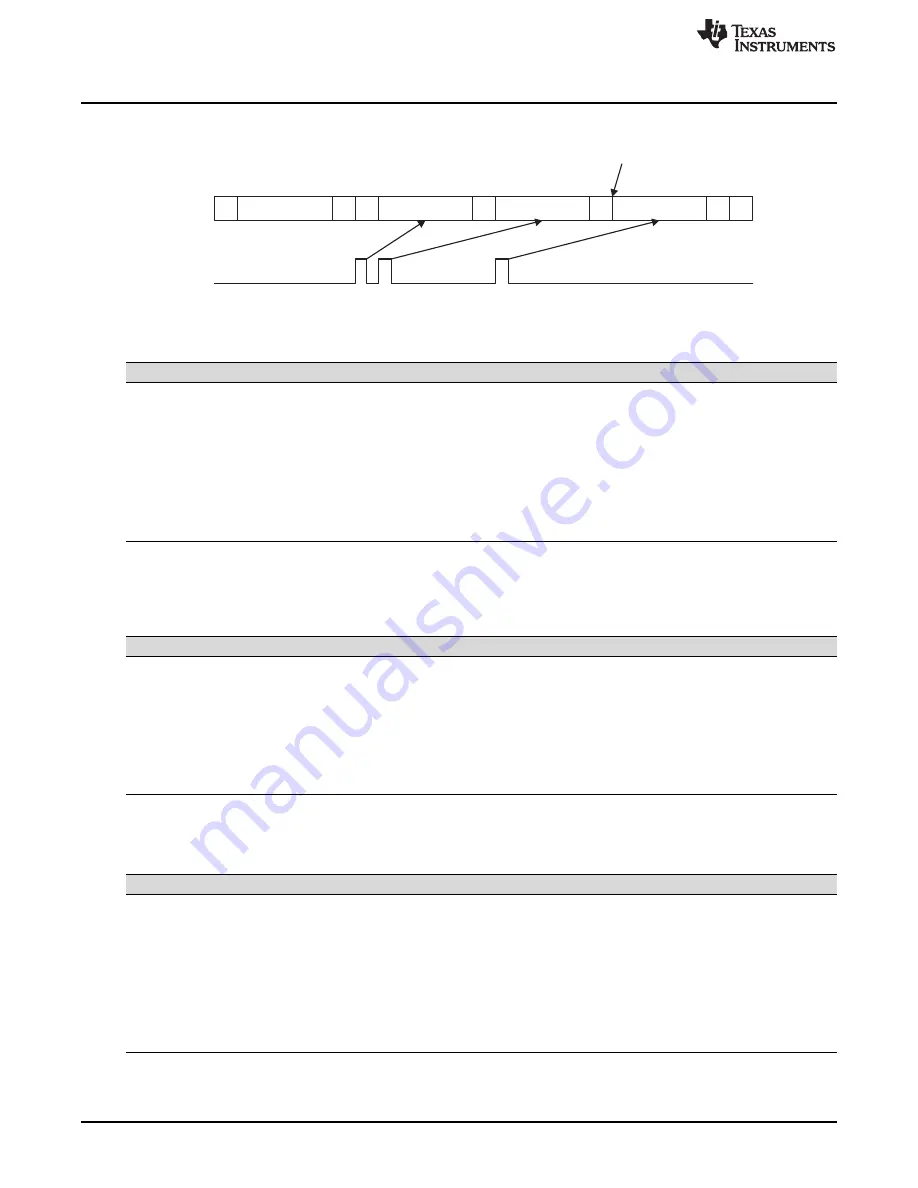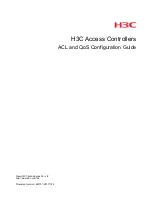
Master-transmitter (repeat mode)
(Please note that this behavior is independent of BCM bit)
S
A
A
A
nA
P
W
Slave address
Data
Data
Data
Interrupt
Set STP bit
I2C Control Registers
1398
SPNU503C – March 2018
Copyright © 2018, Texas Instruments Incorporated
Inter-Integrated Circuit (I2C) Module
Figure 27-23. Typical Timing Diagram of Repeat Mode
(1)
P = Stop condition; S = Start condition; A = Acknowledge bit; D = data
Table 27-16. I2C Module Condition, Bus Activity, and Mode
RM
STT
STP
Condition
Bus Activities
(1)
Mode
0
0
0
Idle
None
N/A
0
0
1
Stop
P
N/A
0
1
0
(Repeat) Start
S-A-D..(n)..D
Repeat n
0
1
1
(Repeat) Start-Stop
S-A-D..(n)..D-P
Repeat n
1
0
0
Idle
none
N/A
1
0
1
Stop
P
N/A
1
1
0
(Repeat) Start
S-A-D-D-D-....
Continuous
1
1
1
Reserved
none
N/A
Table 27-17. I2C Module Operating Modes
FDF
MST
TRX
Operating Mode
0
0
x
Slave in non-FDF mode
0
1
0
Master receive in non-FDF mode
0
1
1
Master transmit in non-FDF mode
1
0
0
Slave receive in FDF mode
1
0
1
Slave transmit in FDF mode
1
1
0
Master receive in FDF mode
1
1
1
Master transmit in FDF mode
Table 27-18. Number of Bits Sent on Bus
BC2
BC1
BC0
Bits in FDF
Bits with ACK
0
0
0
8
9
0
0
1
NA (reserved)
NA (reserved)
0
1
0
2
3
0
1
1
3
4
1
0
0
4
5
1
0
1
5
6
1
1
0
6
7
1
1
1
7
8
















































